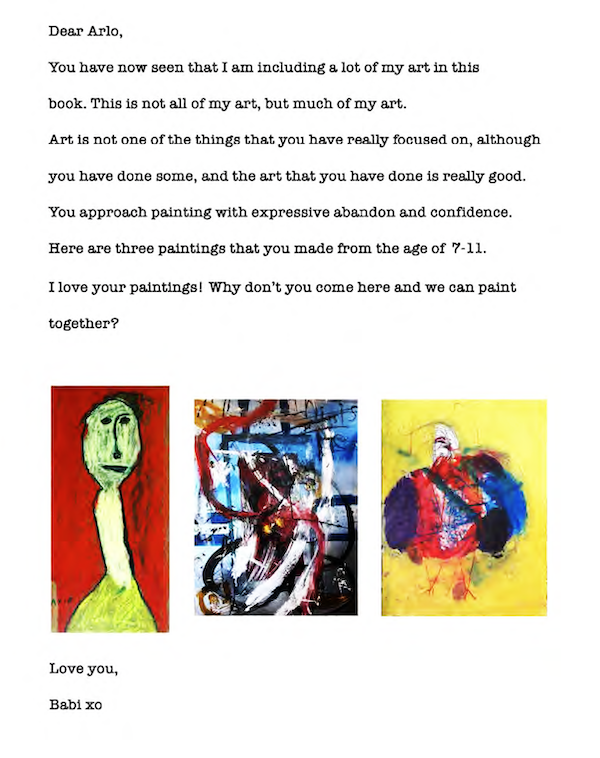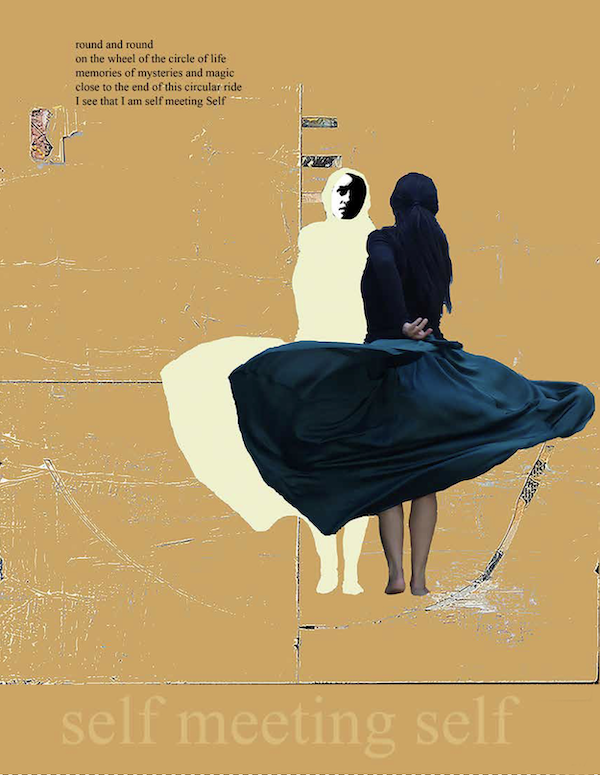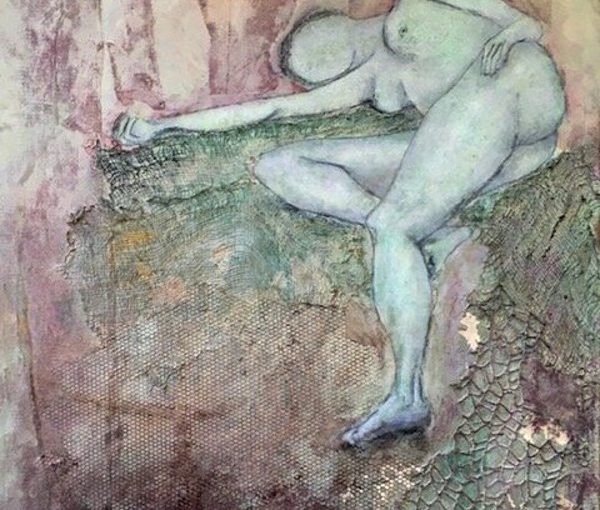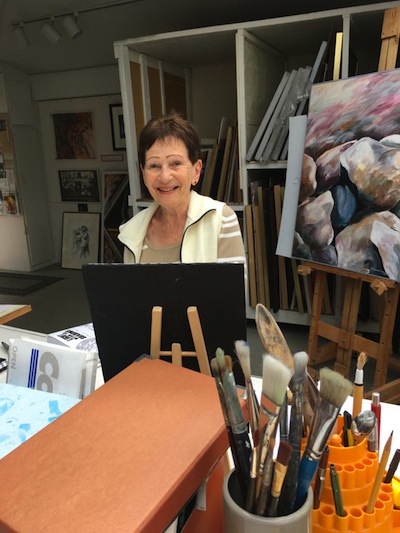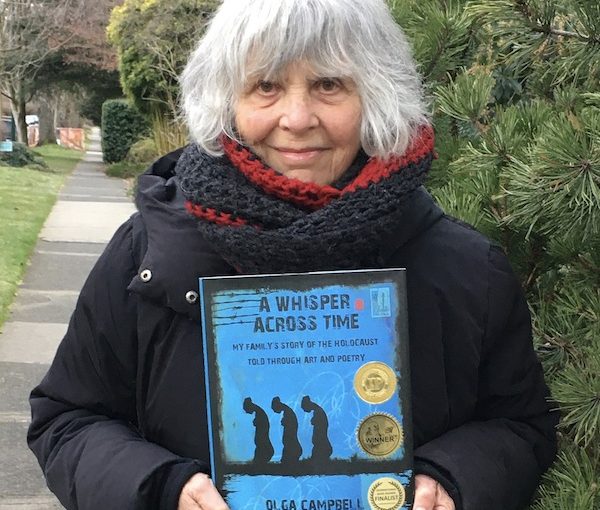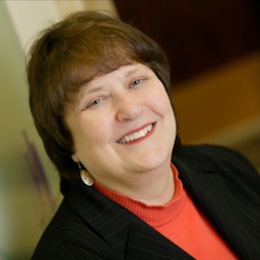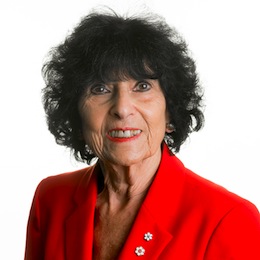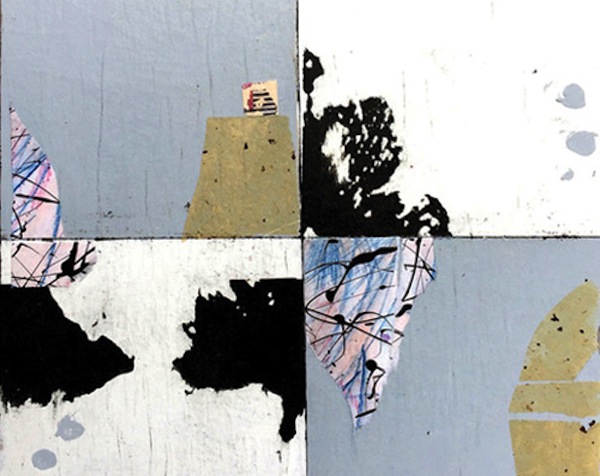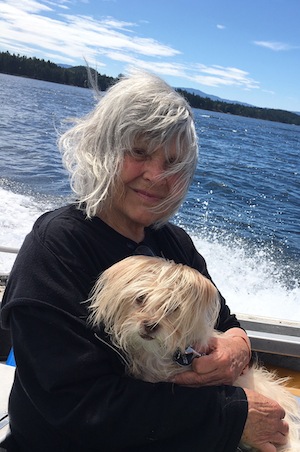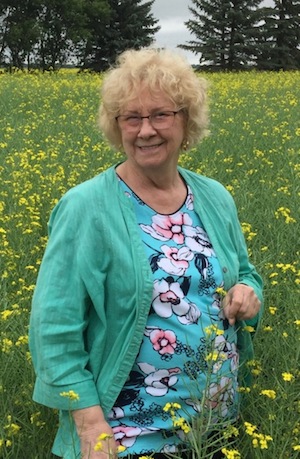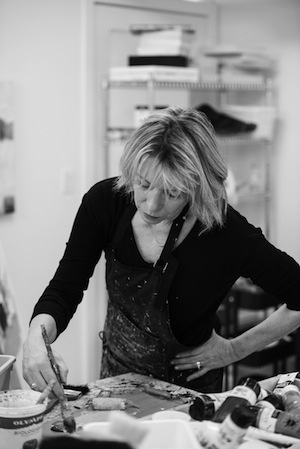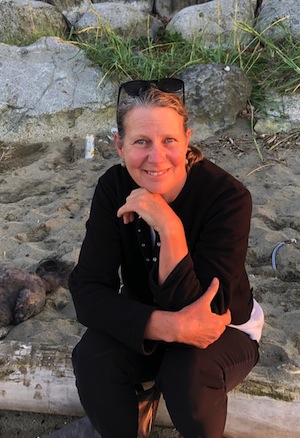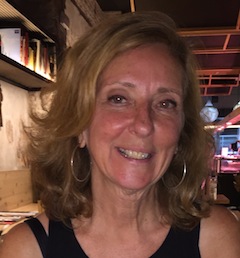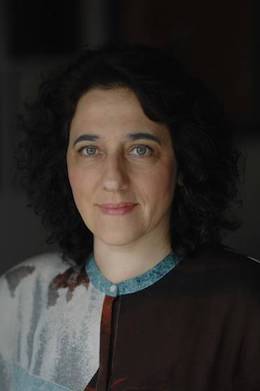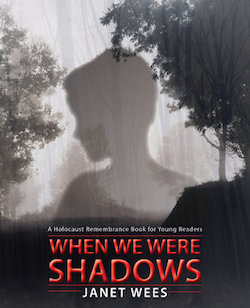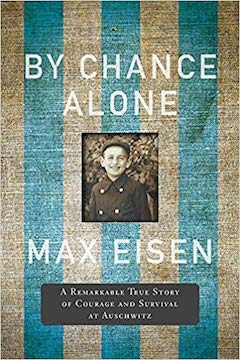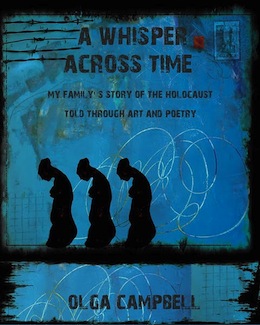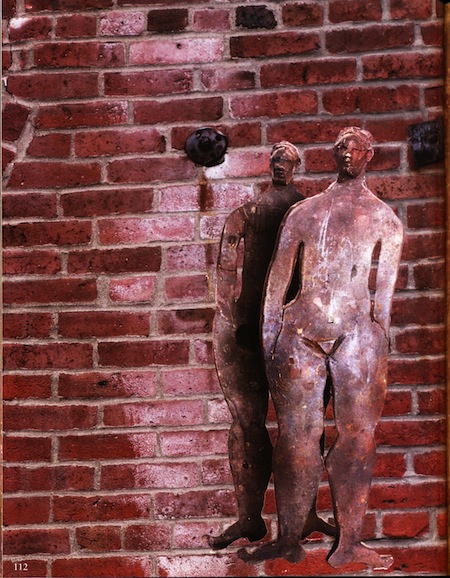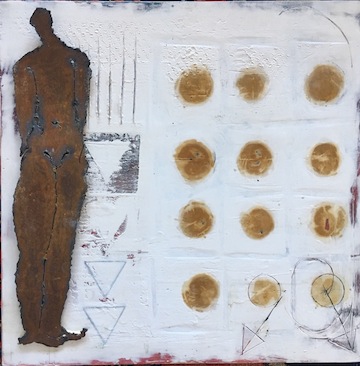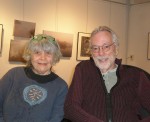Artist Olga Campbell and her grandson Arlo, for whom Campbell wrote her memoir, Dear Arlo: Letters to My Grandson. (photo from Olga Campbell)
Recently, Olga Campbell published her third book, a memoir, Dear Arlo: Letters to My Grandson. Campbell’s new solo show with the same name opened at the Zack Gallery on Jan. 9. It features a selection of paintings and sculptures from the book, as well as a short film.
“The film starts the exhibition,” Campbell told the Independent. “It contains my photographs of Vancouver and its people. It is called Everybody Has a Story. The show and the book portray one of those stories – my story. But millions of other people have their stories, too, and, in the film, in my photos, I tried to tell some of those stories.”
Campbell said, “The book and the show are my answers to the questions my grandson asks. He is interested in our family’s past. We are very close, he and I. We just went to Nepal together. I thought I would write this book for him, as my legacy.”
The book does not concentrate exclusively on pain and tragedy, on the deaths of her family members in the Holocaust. It also celebrates the power of art and writing as a transformational and healing tool. Besides letters to her grandson, the book includes Campbell’s poetry and art, essays written by the artist, and her family’s traditional recipes. (See jewishindependent.ca/a-multidimensional-memoir.)
The Zack Gallery show is a subset of the book, a selection of paintings and sculptures the memoir highlights. The paintings are mostly collages based on the artist’s photographs. Each photo is Photoshopped into infinity, so none of the faces in the paintings have any resemblance to their origins. Campbell likes to experiment with images, looking at them from different perspectives, applying different approaches. Like her inner child who never grew up, she plays with them, making up different stories for different levels of perception.
One of the paintings, “Corridor of Memories,” has a couple of faces looking at the viewer with thoughtful, slightly anxious expressions. Behind those faces, a long corridor stretches into an unknown distance. The memories that come from that distance seem diverse and unsettling, a mix of positive and negative, but different for everyone.
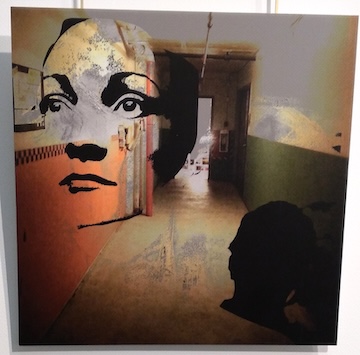
“There is bad there but there is also some good stuff there,” she said. “I played with the faces in that painting. I thought it would be interesting to make them three-dimensional. That’s how I came up with the sculptures in the show. They are the result of the images unfolding from 2D to 3D.”
Another painting that underwent a similar metamorphosis is “Shall We Dance? – self meeting Self.” Campbell explained: “I took this image from the confines of a frame and brought it to life by making it three-dimensional. The title, ‘self meeting Self,’ refers to the small self, the individual, the ego, meeting the Universal Self, and the ensuing dance of Self-discovery, joy and wonder of life.”
The 3D dancers – a thickened silhouette of the flat painted image beside it – rotate. They are accompanied by the song “Shall We Dance,” played by a tiny music box, when someone winds it up.
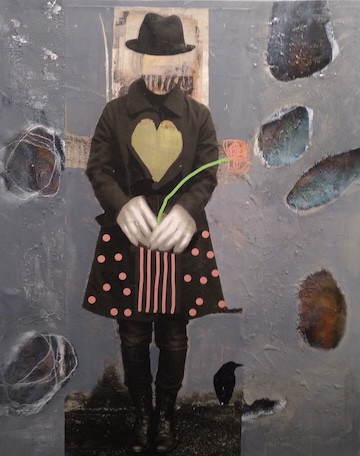
Sometimes Campbell’s reconstruction of images results not in an additional dimension but in a deepening complexity of the original idea. In “The Sky is Falling,” she took a person’s outline from the painting beside it and embellished it with everything that she felt was relevant to our hectic lives. Unlike most of the other paintings in the gallery, there is no face in this one. The grey danger hangs over all of us, regardless of our facial features or skin colour.
“There are lots of similarities in our world today and the one that preceded WWII,” said Campbell. “That’s why I put a crow in that painting. A crow is a traditional symbol of death, but also of transformation, of change and the future.”
Like the book it is based on, the show is not linear. It reflects the artist’s response to various events in her life, both happy and sad, from her coming of age, to the current war in Ukraine. Both the memoir and the show emphasize Campbell’s personal journey through the beauty and the trauma of life, so inextricably entangled together.
At the gallery on Jan. 23, 7 p.m., Campbell will discuss her book and her art in an event co-presented by the Zack Gallery and the JCC Jewish Book Festival. Campbell’s exhibit will be on display until Jan. 27. To learn more, check out the artist’s website, olgacampbell.com.
Olga Livshin is a Vancouver freelance writer. She can be reached at [email protected].



